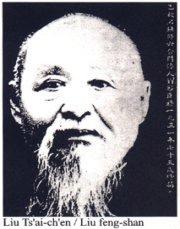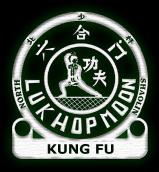
Lau Tsoi San


|
Lau Tsoi San |

|
Great-grandmaster Lau expressed during his life a great affection for martial arts. His first studies were made under supervision of Liu Dekuan (1826-1911), a famous, travelling Bagua and Xingyi master. After the dead of his teacher he went back to Beijing.
It is said that trademarks of Liu Dekuan were Yueh Style San Shou and the long spear. However, his lineage as second generation student of the famous master Dong Hai-Chuan (1798-1882) also betrays that he was also adept in baguazhang. It is partly due to the exchange programmes between the xingyi and the bagua style that he mastered various aspects of xingyi during his martial arts career. Liu Dekuan is also known as a master of Bagua Taijiquan.
Taking the above into account it is reasonable to say that great-grandmaster Lau focused under supervision of his first teacher on the education in Yueh Style San Shou, the long spear, and baguazhang, but only received some training in the aspects of xingyiquan.
Xingyi
The above reasoning even gets more support if one takes into account that great-grandmaster Lau later in his life went to his teacher's xingyiquan brother Geng Ji Shan (1860-1928) to complete his study of xingyiquan. This step would not have been necessary if he had felt that he had obtained proficient skills in this branch of martial arts.
In our historical note we will focus on the origin of xingyiquan and also argue how luk hop is not only connected to the Shaolin Kungfu, but also related to xingyiquan.
Wu style taijiquan
Great-grandmaster Lau was an inner student from Wu Chuan You (1834-1902), who learned the Yang-style of taijiquan from Yang Lu-chan (1799-1872). Wu Chuan You gave a distinct touch and interpretation to the taiji he mastered and passed his knowledge on to his son Wu Chian-chuan (1870-1942), great-grandmaster Lau, and Wang Mou-chai.
It is an academic isssue who is the actual founder of the Wu style of taijiquan: Wu Chuan You or his son Wu Chian-chuan ? It is better to recognize both lines as such. However, one ought to realise that this inevitably leads to two distinct expressions and interpretation of the Wu-style of taijiquan. One resembles closely the Yang-style of taijiquan, while the other has many of it's patterns of repetition reduced and is clearly distinct in form and character from the Yang-style.
Save to mention that our line of Wu taijiquan kept a high level of resemblance with the Yang-style.

References
Draeger D.F., Smith R.W., 1980, Asian Fighting Arts (High View Publications), ISBN 0-87011-436-0
Du X., 1994, Wu Hun Magazine, (translated by Joseph Crandall) [local version]
Guang X., Records of Selected Dialogues between Dong Haichuan, (translation by Joseph Crandall) [local version]
Liang S.-Y., Yang J.-M., Wu W.-C., 1994, Emei Baguazhang, (YMAA Publication Center), ISBN 0-940871-30-0
Liu Y.D., The Origin of Eight-Diagram Palm [local version]
Miller D., Cartmell T., 1994, Xing Yi Nei Gong, ISBN 1-88175-04-6
Wong S.T., 1983, transmission of Xingyiquan [capita selecta]
Wong S.T., 1983, unpublished memoires
Wu Y.-H., Ma Y.-L., 1991, Wu style Taichichuan, ISBN 962 239 103 6